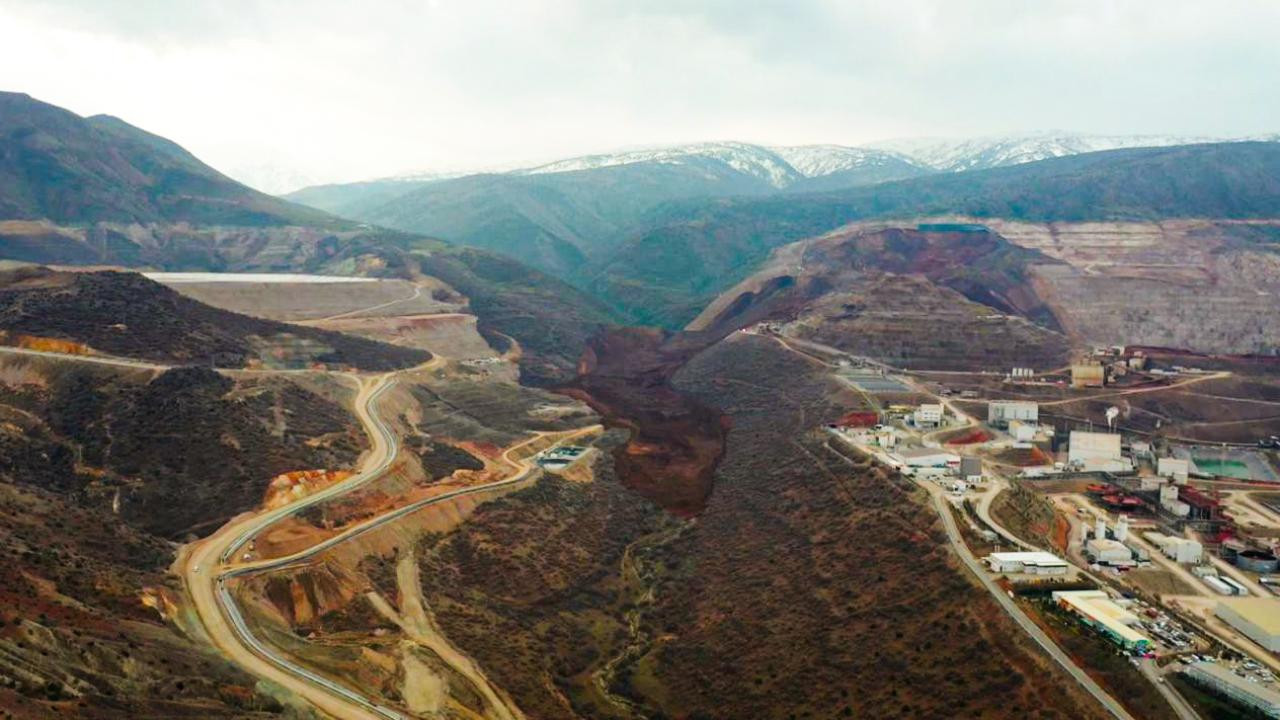Turkish Mining Authority removed active fault under collapsed Çöpler Gold Mine from map, CHP reveals
Turkey’s state-run mining authority (MTA) has removed the active fault line running under the recently collapsed Çöpler Gold Mine in the eastern Erzincan province from its official 2023 fault map, revealed CHP vice chair Deniz Yavuzyılmaz. Meanwhile, search operations for the nine workers trapped under dirt have stopped due to the risk of new landslides.
Duvar English
Turkey’s Mineral Research and Exploration General Directorate (MTA) under the Energy and Natural Resources Ministry removed the fault line running under the Çöpler Gold Mine in the eastern Erzincan province from its official 2023 fault map, reported main opposition Republican People’s Party (CHP) vice chair Deniz Yavuzyılmaz on February 22.
Yavuzyılmaz stated that the 2023 official map of Turkey’s active faults did not depict the Munzur segment of the Ovacık Fault in eastern Turkey, running directly under the Çöpler Mine in Erzincan’s İliç district.
 The 2013 map depicted a red fault line running through the location of the gold mine in the İliç district of Erzincan province.
The 2013 map depicted a red fault line running through the location of the gold mine in the İliç district of Erzincan province.
 However, the fault line seemed to be cut off right around the mine on the 2023 version of the map. Other fault lines in the region remained similar to the 2013 map.
However, the fault line seemed to be cut off right around the mine on the 2023 version of the map. Other fault lines in the region remained similar to the 2013 map.
Yavuzyılmaz suggested that the fault segment was removed deliberately by the ruling Justice and Development Party (AKP). The official fault maps could serve as a basis for the challenges against the mine.
Yaparsa AK Parti yapar!
— Deniz Yavuzyılmaz (@yavuzyilmazd) February 21, 2024
MTA’nın, Erzincan İliç’teki Anagold maden sahasının tam altından geçen Ovacık fay hattı-Munzur segmentini resmi fay haritasından sildiğini tespit ettik.
2013 yılı MTA haritasında bulunan fay hattı, 2023 yılında yayınlanan haritada yok!
Kaynak: Maden… pic.twitter.com/3cNuhJ9Msm
Erzincan sits on top of one of Turkey's most active faults. The city was struck by major earthquakes in the past and had to be completely rebuilt after the 7.8-magnitude earthquake in 1939 destroyed almost all settlements.
The Çöpler Mine was established in 2009 to the dismay of experts, opposition figures, and some neighboring villagers as they warned about the dangers of cyanide-based gold mining, especially as the mine was close to the Euphrates River.
The cyanide-laden waste soil heap weighing millions of tons collapsed at the mine on February 13, trapping nine workers and exposing toxic chemicals to the environment. Search operations for the nine trapped workers could not continue due to the risk of new landslides.
Experts said that disaster was expected at the mine, as previous accidents and irregularities in documentation signaled a lack of control on the operating company Anagold and the Environment Ministry’s part.
Workers stated that the company had known about the landslide risk ahead of the disaster, as they had observed cracks along the waste soil heaps.
The Ministry of Environment, Urbanization, and Climate Change on Feb. 17 announced that the mine's license had been canceled. Former minister Murat Kurum came under fire for signing off on a three-fold capacity increase at the mine without the necessary environmental impact assessment.
Experts warned that the collapse could lead to significant water contamination as the mine was situated in a water basin linked to the Euphrates River spanning six countries.
However, the Environment Ministry reported no pollution in the Euphrates River so far. Operator Anagold Mining Company also claimed that there was no contamination in the region and no cyanide flow into the river.


 Scientists determine heap leach caused landslide in Turkish mine 70 pct higher than maximumDomestic
Scientists determine heap leach caused landslide in Turkish mine 70 pct higher than maximumDomestic Miner says company aware of landslide risk two days before Turkey's mining disasterDomestic
Miner says company aware of landslide risk two days before Turkey's mining disasterDomestic Turkey's former Environment Minister Kurum rejects negligence in collapsed gold mineEducation
Turkey's former Environment Minister Kurum rejects negligence in collapsed gold mineEducation